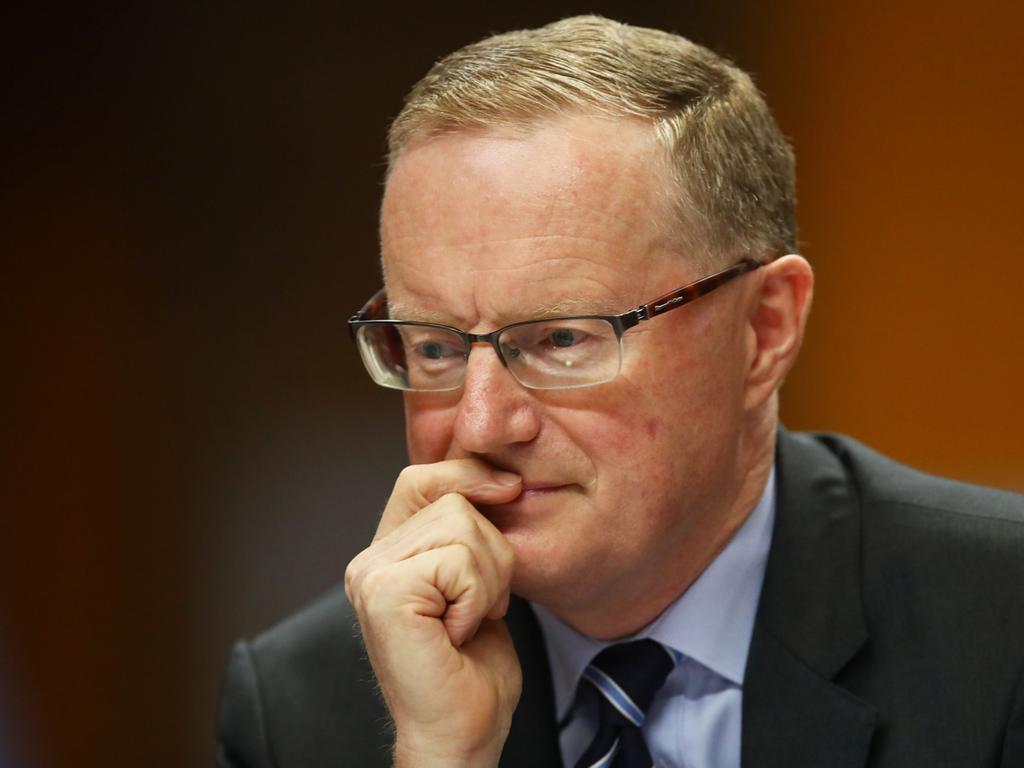Indigestion at Reserve Bank of Australia after Barrenjoey lunch
The RBA gets valuable feedback from its many private meetings, and it’s hard to prove that last Thursday’s lunch with institutional clients of Barrenjoey gave an unfair advantage to attendees.

The RBA gets lots of valuable feedback from its many private meetings, and it’s hard to prove that last Thursday’s lunch with institutional clients of Barrenjoey gave an unfair advantage to attendees.
The track record of discretion displayed by Philip Lowe and past RBA governors speaks volumes.
But in the emotionally charged atmosphere of rising interest rates, optics matter more than ever. That’s particularly the case with the review of the RBA due to be released in the coming months.
Lowe’s term will end in September, unless he’s reappointed by the Treasurer.
Last Thursday afternoon saw a continuation of the aggressive sell-off of Australian bonds and shares that started when US interest rate expectations began to soar after stronger-than-expected US data the previous Friday, and continued after a hawkish RBA statement on Tuesday. The Aussie dollar mainly reflected US dollar movements over the week.
Traders did report a sharp a fall in bank bill futures prices on Thursday, and parts of the swaps curve spiked up on hedging activity. But there was no clear reaction to the Barrenjoey lunch.
Sometimes the RBA gets it wrong – such as in continuing to tighten monetary policy amid inflation concerns in August 2008, right before the US subprime crisis morphed into the global financial crisis. At the time, then governor Glenn Stevens was rightly slammed in the press.
But this time there’s a much bigger inflation problem to deal with and no obvious reason for a financial crisis. Central banks will always draw more criticism when rates are rising.
The RBA is in its fastest tightening cycle in more than three decades, having raised rates by 3.25 percentage points in nine consecutive meetings since May.
The bank’s pandemic-era guidance that rates wouldn’t rise until at least 2024, has also been widely criticised. But the RBA wasn’t the only central bank thinking rates would be steady for years. Even as US inflation remained stubbornly high through 2021, it wasn’t until March 2022 that the Federal Reserve started to project much of a rise in rates before 2024.
The Fed funds rate is now a whole 2 percentage points higher than the Fed’s March 2022 “dot-plot” projected it would be by the end of 2023 as the Fed has had its own inflation problem.
Private meetings give the RBA regular access to a vast amount of feedback from corporate treasurers and the like. These meetings, unlike its business liaison program, are face-to-face.
RBA officials can cop the full force of business people and others who disagree with their policies. Meetings with traders may be less valuable, as traders are loath to reveal their positioning.
But it would be unusual for an RBA official to give non-public information at such a forum.
Still, the RBA leaves itself unprotected by not recording and releasing the content of its discussions in private meetings. Of course, the risk is that by doing so the central bank would run the risk that participants in the private meetings would be much less candid about their concerns.
But sometimes the public will demand to know what was said.
The RBA has denied that Lowe gave any hints on the potential “terminal rate” of cash, which everyone is focused on. However, there are nonetheless some disturbing rumours about what was said. Those rumours are impossible to put to sleep because of the lack of any transcript of the lunch.
A second “optical” problem with last Thursday’s RBA-Barrenjoey lunch was the fact that it occurred a day before the bank’s quarterly Statement on Monetary Policy last Friday.
The hawkish message of the statement was essentially unchanged from the governor’s post-meeting statement. The gist of the RBA’s updated forecasts had already been delivered.
But there was a significant capitulation of less hawkish views after the meeting and that continued after the SoMP – fertile ground for resentment about a private lunch on the Thursday.
A third issue with this particular lunch was that the RBA governor bypassed the usual February speech to the National Press Club, where post-meeting thoughts are typically dissected.
“It is more a question of optics, with him bypassing the usual February speech,” said Westpac’s head of rates strategy, Damien McColough.
“The market was already trading heavy beforehand and knew that the SoMP would have hawkishly-revised forecasts … so there’s nothing so hard to explain from a price action perspective.”
Treasurer Jim Chalmers said the independent review of the RBA would scrutinise how policymakers communicate interest rate decisions.
“I think there’s a broader issue here about how the bank communicates the context for its decisions,” Chalmers told the ABC when asked to comment on the Barrenjoey lunch.
“This is one of the things that I’ve been discussing with the RBA review panel. How they communicate their decisions and the context behind their decisions is a key focus of that.”
Heightened press coverage of Lowe’s approach to communication will intensify the focus on his biannual testimonies to Senate and the House of Representative committees this week.







To join the conversation, please log in. Don't have an account? Register
Join the conversation, you are commenting as Logout